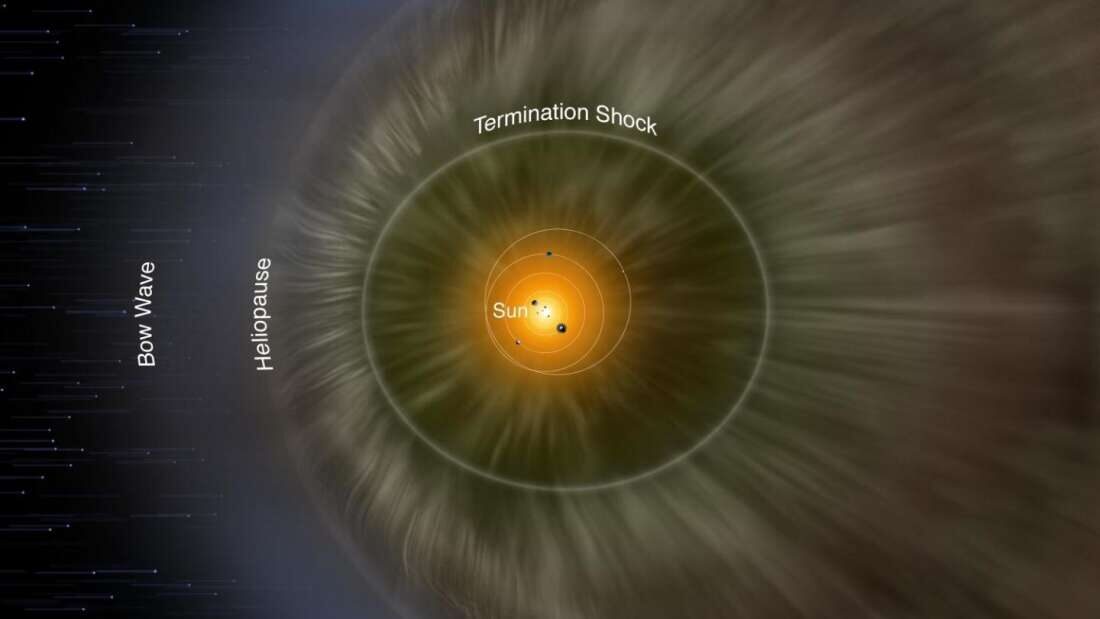
The heliosphere is a bubble created by the solar wind, a stream of mostly protons, electrons, and alpha particles that extends from the Sun into interstellar space and protects the Earth from harmful interstellar radiation.
Reisenfeld and a team of other scientists used data from NASA's Earth-orbiting Interstellar Boundary Explorer (IBEX) satellite, which detects particles that come from the heliosheath, the boundary layer between the solar system and interstellar space. The team was able to map the edge of this zone -- a region called the heliopause. Here, the solar wind, which pushes out toward interstellar space, collides with the interstellar wind, which pushes in towards the Sun.
To do this measurement, they used a technique similar to how bats use sonar. "Just as bats send out sonar pulses in every direction and use the return signal to create a mental map of their surroundings, we used the Sun's solar wind, which goes out in all directions, to create a map of the heliosphere," said Reisenfeld.
They did this by using IBEX satellite's measurement of energetic neutral atoms (ENAs) that result from collisions between solar wind particles and those from the interstellar wind. The intensity of that signal depends on the intensity of the solar wind that strikes the heliosheath. When a wave hits the sheath, the ENA count goes up and IBEX can detect it.
"The solar wind 'signal' sent out by the Sun varies in strength, forming a unique pattern," explained Reisenfeld. "IBEX will see that same pattern in the returning ENA signal, two to six years later, depending on ENA energy and the direction IBEX is looking through the heliosphere. This time difference is how we found the distance to the ENA-source region in a particular direction."
They then applied this method to build the three-dimensional map, using data collected over a complete solar cycle, from 2009 through 2019.
"In doing this, we are able to see the boundary of the heliosphere in the same way a bat uses sonar to 'see' the walls of a cave," he added.
The reason it takes so long for the signal to return to IBEX is because of the vast distances involved. Distances in the solar system are measured in astronomical units (AU) where 1 AU is the distance from the Earth to the Sun. Reisenfeld's map shows that the minimum distance from the Sun to the heliopause is about 120 AU in the direction facing the interstellar wind, and in the opposite direction, it extends at least 350 AU, which is the distance limit of the sounding technique. For reference, the orbit of Neptune is about 60 AU across.
###
Paper: Reisenfeld et al., 10 June 2021, Astrophysical Journal, The American Astronomical Society.



Reader Comments